Brands around us create such a significant influence that can’t be ignored. A brand is the combination of the designer’s thinking and consumer who is subjected to it. We are bombarded daily by images, smells, sounds, and symbols that settle in our minds and the brand arises whenever these are stimulated. We are surrounded by well known products and our society is driven by smart marketing. It’s easy to notice that design is happening globally.
Lockwood, explained that reason plays a major role in marketing, and it’s time to get rid of it. The major difference between reason and emotions, is that reasons leads to conclusions and emotions lead to actions. (Lockwood L, 2005)
In fact, everyone, while driving, has seen the yellow M of McDonald’s and found themselves queuing in the drive thru. That’s because the visual identity of this brand has such a significant strength around it, that we are unconsciously influenced. Mass production brands that use effective communication strategies and are well established, are trusted by the consumer.
But how does a brand become globally recognised? McDonald’s opened in 1940, developing low price hamburgers that are sold through the slogan “the same burger, with the same quality in all parts of the world.” Apparently, this was a key method that worked for McDonald’s. In 1991, there were 12,000 McDonald’s in the world. Today, this number has tripled.( Carriero E., 2013)
Due to global production, a standardisation of items has occurred. As a result of global production, low prices and low brand identity can happen. In order to face this issue, big brands reacted by connecting to local culture. Indeed, a kind of cultural design is rising.
Here is where one big brand adopted a countries cultural identity to sell its products.
An example of this type of marketing was when McDonald’s stepped back to the culinary traditions of each country. This is evident with the italianization of McDonald’s Menu.
In an Italian McDonalds, you can find more fruit and vegetables, as these items are important to Italians. In order to give importance to a cultural tradition, you can have some Barilla pasta (Fig. 1) with Mcdonalds Italian style sauces. These items bring McDonalds ”nearer to the Mediterranean model of eating’.’ (McDonald’s website, 2013)
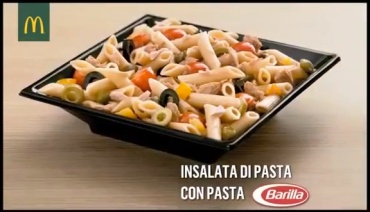
Fig.1
Barilla meets MCDonald
http://www.ilfattoalimentare.it/mcdonalds-barilla-a-braccetto-ma-unione-non-convince-solo-strategia-marketing.html
This example demonstrates how “Branding uses a range of strategies to activate a social identification by consumers, as part of a process of building close links between social and commodity identity.” (R. Jindal,2014)
It is not the first time, however, that this company, has taken heat over efforts to satisfy new desires of its consumers. Similar to his cultural ideas, McDonald‘s has acted with much more health responsibility. In fact, another step further is to support a sport activity with “Happy Meal Sports Camp” with the testimonial Antonio Rossi and other famous sport’s champions (Fig. 2)(McDonald‘s website, 2014).
“Healthy mind in a healthy body” is the slogan of fitness that McDonald‘s conveys by associating its products with a fitness approach. This project has the strategic intent to promote events that reduce the numerous accusations of spreading a culture of poor nutrition. Moreover, McDonald‘s, as reported in Burger Business blog, shows their brand power during The FIFA World Cup soccer in Brazil, in a global sponsorship position. McDonald’s has created extensive special variations to its menu to adapt to the different fan demands.(Fig. 3) As the World Cups is an international event, the game plan is to spoil its customers.(Rizzo A., 2012).
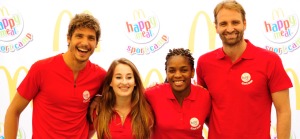
Fig.3
Burgers for FIFA World Cup
http://www.huffingtonpost.com/burgerbusiness/mcdonalds-ties-global-men_b_5317790.html
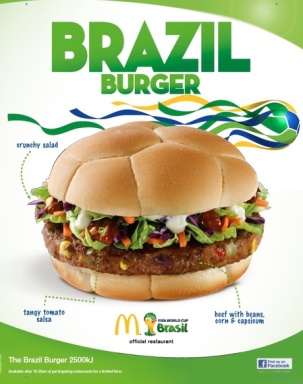
Fig. 2
Happy Meal Sports Camp
http://www.mcdonalds.it/famiglia/happy-meal-sport-camp
Another marketing approach is well represented by Nutella. Nutella’s path is through globalization. Instead of McDonald‘s, who is trying to adapt products by modifying tasting, Nutella is able to operate selling the same product everywhere. Even though the product is always the same, Nutella is trying to achieve an emotional link to connect to every single person, regardless the country. An illusion for the “consumer” is that the company has created the product for them. In reality however, the communication remains firmly controlled by the company that manipulates and uses the enthusiasm of the consumer, to achieve new company goals.
Nutella, has staked everything on their significant popularity and identity. They are able to remove the brand name on the jar, using personalized names and roles labels that cover everyone in the society (dad, friends) (V. Nardi, 2013). This personalised marketing strategy is an example of how Nutella, competes in the global market.
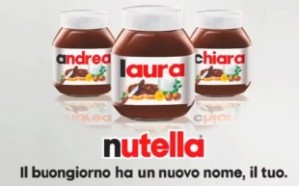
Fig.4
Personalized Nutella jars
http://www.ilfattoalimentare.it/ferrero-personalizza-vasetti-nutella-nome-etichetta-boom-spagna-francia-belgio.html
In addition, Coca -Cola has used a similar strategy: “The main purpose of advertising the known soft drink is to give consumers the opportunity to feel just the brand and remain united under one brand, together sharing a moment of happiness (old slogan of the company).” (P. Pinak,2012)
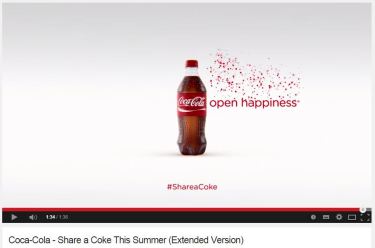
Fig.4
Share a Coke this summer
https://www.youtube.com/watch?v=HUzPwIP9BqE
Ultimately, it’s crystal clear that it is the target customers that dictate which is the most effective marketing strategy to use. Furthermore, the big companies have to respond to market and cultural demands and perceived needs of the consumer. Products which, even if commercialized through mass production, can achieve a personal connection, through marketing, can always satisfy the customer and their needs.
Bibliography
Burger Business, (2014). McDonald’s Ties Global Menus To World Cup. [online] The Huffington Post. Available at: http://www.huffingtonpost.com/burgerbusiness/mcdonalds-ties-global-men_b_5317790.html [Accessed 24 Dec. 2014].
Carriero, E. (2013). Semplicemente io. [Blog] Come è nato McDonald’s. Available at: http://elisacarriero.blogspot.it/2013_06_01_archive.html [Accessed 24 Dec. 2014].
Coca-Cola – Share a Coke This Summer. (2013). Coca-Cola.
Jindal, R. (2014). Brand and the market… pp. 27.
Lockwood, L. (2005). Powering Brands with emotions. 190.107, pp.1-2.
Mc Donald, (2014). HAPPY MEAL SPORT CAMP. [online] McDonald’s Italia. Available at: http://www.mcdonalds.it/famiglia/happy-meal-sport-camp [Accessed 24 Dec. 2014].
McDonald’s (2013) Available at: http://www.mcdonalds.it/ [Accessed 24 Dec. 2014].
Nardi, V. (2013). Ferrero personalizza i vasetti di Nutella: il nome aveva fatto il boom. [online] Il Fatto Alimentare. Available at: http://www.ilfattoalimentare.it/ferrero-personalizza-vasetti-nutella-nome-etichetta-boom-spagna-francia-belgio.html [Accessed 24 Dec. 2014].
Pinak, P. (2014). Marketing strategies of Coca-Cola. 1st ed. pp.1-10.
Rizzo, A. (2012). Strategie e Marketing 3.0: Il caso McDonald’s UK e Italia – Papers – Brandforum.it. [online] Brandforum.it. Available at: http://brandforum.it/papers/844/strategie-e-marketing-3-0-il-caso-mcdonald-s-uk-e-italia [Accessed 24 Dec. 2014].